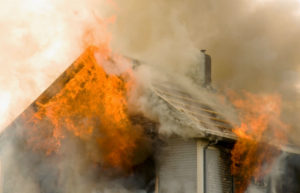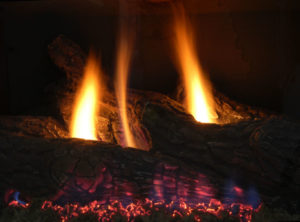The flame grilling your steak or burger is normally the only fire you think about in summer. But a little consideration now can avoid a big concern when the chill comes in the fall and you’re lighting your fireplace. A chimney fire is a conflagration you never want to see, especially coming from your own home. Simply closing off the damper is not chimney maintenance. Fireplace and chimney safety come down to two simple practices: maintenance and use.
Fireplace & Chimney Maintenance
According to a report by the National Fire Protection Association, (NFPA) dirty heating equipment, primarily chimneys, was the main cause of home heating fires. An avoidable tragedy like this is easy enough to prevent by calling a chimney professional from Old Dominion Chimneys. If you keep three essentials in mind, you will always have a head start in chimney safety.
- Annual chimney sweeping: An annual inspection and cleaning of your chimney is recommended by the NFPA. What is the chimney professional looking for? Blocked vents; masonry damage ; and creosote, a black deposit of charred wood that clings to the chimney or liner and can cause fires.
- Structural damage check: Although an annual professional inspection includes a check for any masonry damage, as the homeowner, you also can keep an eye out for cracks, loose bricks, and missing mortar that can lead to a breakdown in the strength of your chimney.
- Chimney cap installation: A well-fitted cap professionally installed prevents loads of potential problems. It prevents moisture that can contribute to weakening masonry; nesting birds; and critters such as squirrels and raccoons that want to find a home in your chimney. A chimney cap, because it avoids big problems that can cause larger problems that cost thousands of dollars, is one of the smartest forms of maintenance and prevention you can invest in.
Safe Fireplace Usage
Safe fireplace usage may seem obvious, but it’s nothing to take for granted. Three basic practices will make your annual maintenance easier and keep you and your family safe from fires and carbon monoxide poisoning. A good fire is made from good burning habits.
- What to burn: Burn only seasoned, hard woods. Hard woods, such as oak, that have been cut at least six months earlier are not only cleaner to burn, they are easier to start. According to the Chimney Safety Institute of America (CSIA), freshly cut wood can contain up to 45 percent of water. Once you have the right wood, you want to store it properly too so it doesn’t become damp. The CSIA offers tips on choosing and storing wood.
- What not to burn: Wood that is green, soft, or painted should not be burned in your fireplace. Soft, green, resinous woods, such as pine, contain sap that produce the dreaded creosote. Painted and treated wood contain toxins that will be released into your home environment. You also don’t want to use your fireplace to burn trash and paper.
- How to burn: Stack your wood in the back of your fireplace rather than the front. Begin with a metal grate then build with kindling. Don’t use lighter fluid and make a small stack. Fires that burn too high and too hot, are another culprit of creosote, as well as cracks in the masonry. Finish off by placing a mesh screen or installing a glass doors to keep sparks from flaring out. Keep the fireplace clear of anything that can become too hot and catch fire.
A room with a fireplace is a home’s showpiece as well as a favorite gathering space. Contact Old Dominion Chimneys for a certified professional to inspect your chimney and ensure that your fireplace will be ready to keep your family warm this winter.

Recent Comments